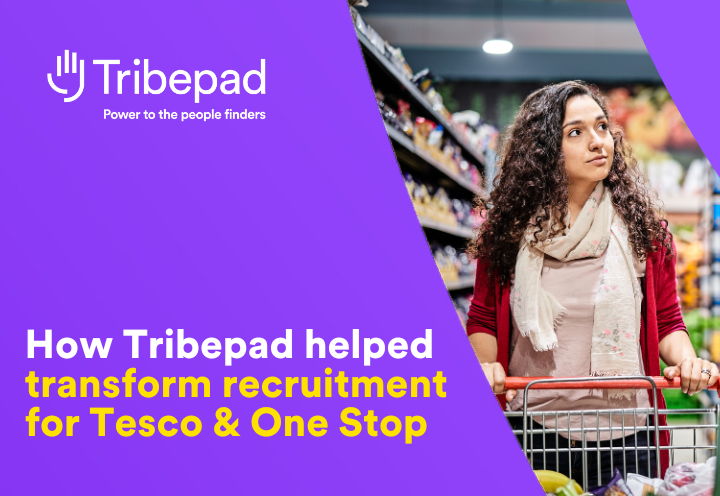During the recessions of 1980, 1990, 2000, and the Great Recession, lots of businesses struggled. As you’d expect. What you might not expect is that 9% of companies flourished, outperforming competitors by 10% in sales and profitability.
Let’s not beat about the bush: these are difficult times. The costs of doing business are soaring, and practically every organisation faces major margin pressure.
But being one of the 9% means protecting business-critical functions like recruitment. And not just protecting – optimising.
Today’s biggest recruitment challenges aren’t going away anytime soon. Skills shortages are as big an issue as ever. Turnover is as much a frustration as ever. Great people are as critical to performance as ever.
If you ask the 9% who achieved lasting gains over their competitors, recession is not just a challenge but an opportunity. While other organisations are freezing investment and making do with ‘good enough’ technology, there’s space for forward-looking organisations to sweep in and create a competitive edge.
But, especially now, securing investment for new talent tech can be tough. You need to create a compelling business case that makes investment a no-brainer.
Let’s break that into seven steps.
Seven steps for building a business case for new talent acquisition software
-
Align to business goals
-
Show why better recruitment needs better tech
-
Identify and speak to key stakeholders’ priorities
-
Dig into benefits (not just features)
-
Show why not investing hurts
-
Make the case for your chosen provider
-
Show what happens next
1. Align to business goals
To prove the value of new recruitment software, you first need to prove the value of recruitment. Show how your team help the business meet its goals.
Write your business case in language stakeholders care about.
Like… Maybe the business faces difficult competitive conditions, with new disruptors known for better customer service threatening market share. To compete, the business needs to grow customer service headcount and improve quality of hire.
Or… Perhaps you’re at loggerheads with other companies over the holiday sales peak. To meet sales goals, the business needs a huge influx of reliable seasonal workers – but you won’t get there without a high-functioning recruitment team.
The point is: prove investment is a business opportunity. Not just a recruitment opportunity.
2. Show why better recruitment needs better tech
Now you’ve shown why recruitment’s important for the business. Now show why recruitment needs new tech.
Don’t assume stakeholders know how recruitment works. Help them understand what you do, how you do it, what problems you face, and why new tech helps you overcome those problems.
Bring your day-to-day to life. The more stakeholders can feel where you’re coming from, the more they’ll buy into your proposal.
Like… perhaps your team are currently stuck at their desks over every lunchbreak handling manual admin. It’d be super compelling to spend a week tracking that, so you can tell stakeholders exactly how long your team waste and how much that’s costing.
On average office workers lose one-third of their time to manual admin. That’s equivalent to 69 working days – or roughly a quarter. What would regaining that time mean for your recruitment targets?
Or… maybe your recruiters are overwhelmed by applications. Tell stakeholders exactly how many applications you sift through, how that impacts time-to-hire, and how you stack up against benchmarks.
The point is: show (don’t tell) stakeholders why your talent acquisition function needs new software.
3. Identify and speak to key stakeholders’ priorities
To secure investment, you need the buying committee on your side. Your business case needs to speak to all decision-makers’ concerns and priorities.
Identify key stakeholders’ needs early. This means you don’t waste time backtracking for approvals and helps secure early buy-in. If you’re lucky, even an early champion, who’ll go to bat for you when it counts.
(That’s why we recommend understanding your stakeholder community before researching recruitment software.)
Don’t forget end-users are crucial stakeholders too. Candidate, manager, and recruiter experience are super important. (Every layer of complexity makes hiring take longer and groans get louder…)
Tailor your business case to speak to every stakeholder, to galvanise support from everyone.
Like… IT typically cares most about data security and compliance, painless integration, reliability, and support. A compelling business case that wins over IT leaders will address those concerns directly.
And… Procurement typically cares most about managing supply risk and controlling costs. Your business case should answer questions like…Is this software good value for money? Is the supplier financially stable? How will working with the supplier impact our brand image? What happens if we want to end the relationship?
The point is: investment’s a collaborative decision: your business case should reflect that.
4. Dig into benefits (not just features)
This part of your business case should pack a punch. It’s where you talk about the benefits of investing, related back to the business goals, recruitment need, and stakeholders’ priorities you’ve identified so far.
Like… Investing in new talent tech will improve the candidate experience and help us win the battle of the brands, so we can overcome skills shortages and win the top talent we need to grow.
Download the ultimate guide to candidate experience in a post-pandemic world now.
Or… Investing in video interviewing software means our team can interview more candidates in less time, slashing time-to-hire. So we can snap up seasonal workers before competitors do and smash the seasonal sales peak. Boom.
An important point here: don’t just list features.
A feature is what something does, not why something’s important. To truly persuade stakeholders they need to invest, you need to focus on benefits. A great tactic is asking ‘So what?’. Like this:
‘A new ATS means our candidates are automatically stored in a central database.’
So what?
‘…so we can easily search all candidates who’ve ever applied for a role with us.’
So what?
‘…so we reduce our agency spend by increasing our talent pool.’
Reducing agency spend is a much more compelling reason to invest than a central applicant database. And the same is true of every feature of the software you want.
(Learn how Sodexo saw a 40% drop in agency costs in their first year using Tribepad).
The point is: unpick why new talent acquisition software really matters. For the business, for recruitment, and for your key stakeholders.
5. Show why not investing hurts
Benefits and risks work hand-in-hand. Benefits explain why investing makes sense; risks explain why not investing hurts.
Think about the alternatives to investing in new recruitment tech. Then identify the risks those incur.
Like… One of the most common alternatives to investment is doing nothing. But if your competitors are building a fantastic EVP and you do nothing, you could fall behind. Can you afford not to compete for the best people?
Or… Say recruiters are using spreadsheets to track candidates. It’s a mess, with no centralised ATS. Keep doing that, and the business risks falling foul of increasingly strict data regulations – which could come with large fines and long-lasting reputation damage.
The point is: new recruitment software is a cost. But what’s the cost of not investing?
6. Make the case for your chosen provider
You probably delegated software research to a recruiter on your team (send them this, if so). If they’ve done a great job, this part should be easy.
Here’s where you make the case for the talent acquisition software you’ve chosen. Focus on explaining your provider’s USPs: why are they better for the business than their competitors?
Like…Tribepad’s talent acquisition platform is the most feature-rich tech we’ve seen, so we can do everything we’re imagining. Plus your team will love it, it’s beautiful 😎
Or… Tribepad Video Interviewing offers one-way video interviews in the same dashboard, so it covers all the bases. Plus built-in AI translations mean our whole global team can collaborate easily without localisation costs.
Providers can often send you a ready-made brochure or PDF to help you represent them, which can save time. (Here’s ours.)
Summarise your process in this section, to show how you’ve reached conclusions.
Proving you’ve been rigorous bolsters your credibility and helps your stakeholders trust your recommendations.
The point is: show you’ve put thought into this process and build trust in your recommendations.
7. Show what happens next
A great business case makes next steps feel obvious and easy.
Show stakeholders what happens next if they sign off on investment. Leave them with confidence in your ability to execute, proving you’re in control of the process.
Like… We’ll have a configuration workshop next week to walk through implementation. Then weekly focus sessions to configure the software. By week 7, we’ll be able to play with the software ourselves.
And then… We’ll have all 100 recruiters trained and using the platform within twenty weeks. And we predict our time-to-hire will decrease by 25% within the next six months.
The point is: make saying ‘yes’ easy by showing how painless the journey will be.
Tribepad is the trusted tech ally to smart(er) recruiters everywhere. Our talent acquisition software is a springboard for faster, fairer, better recruitment for everyone.




